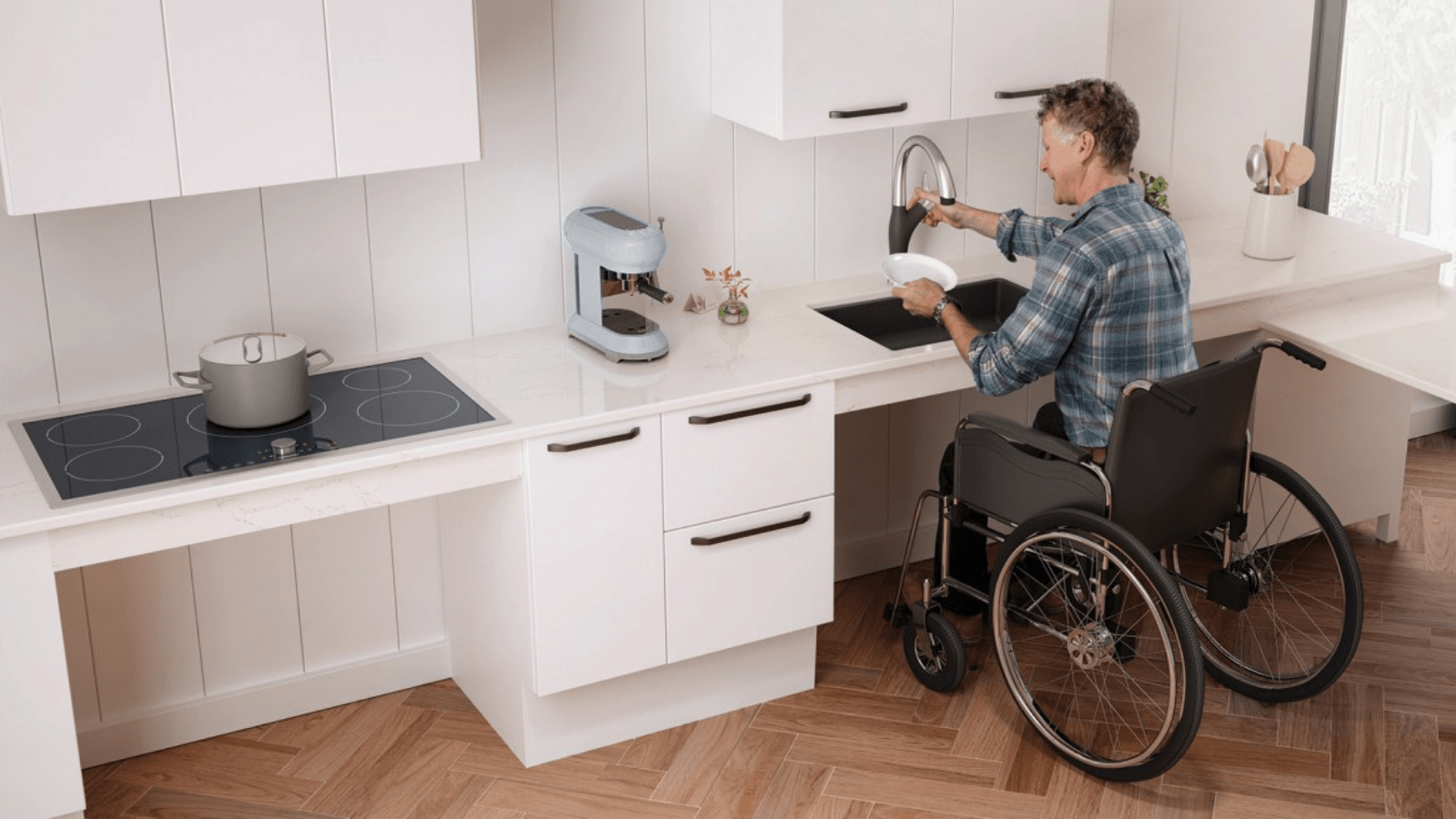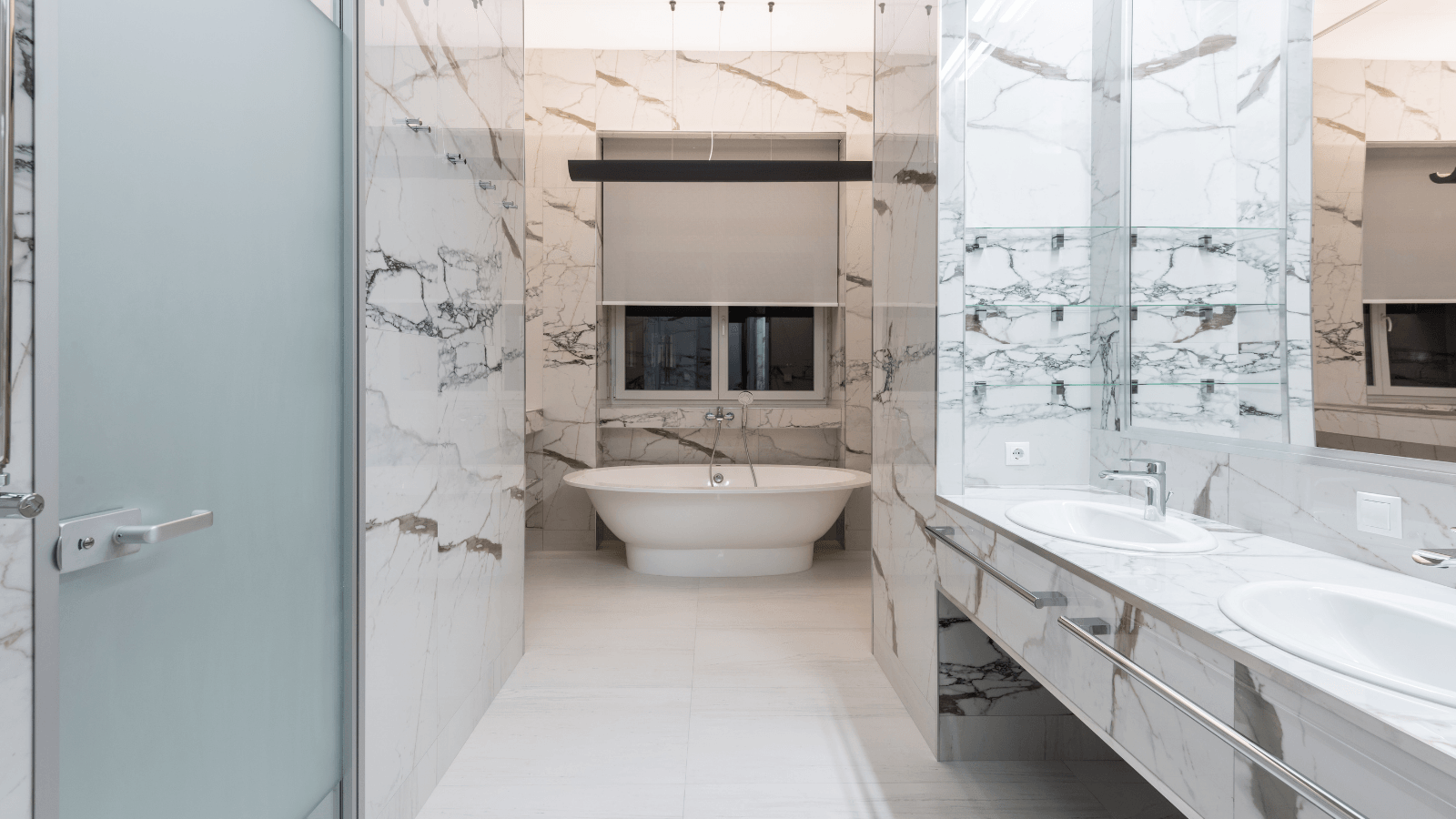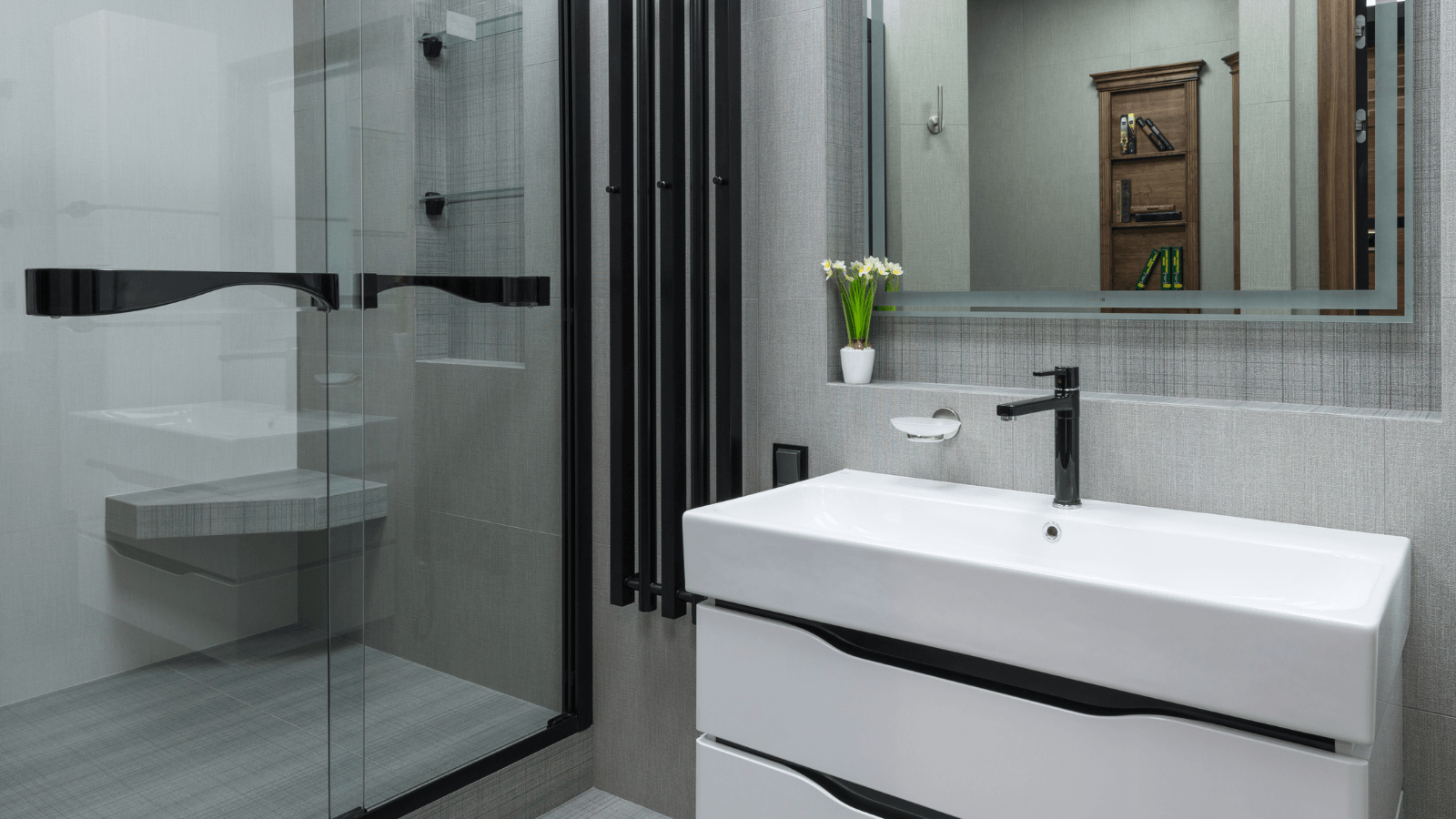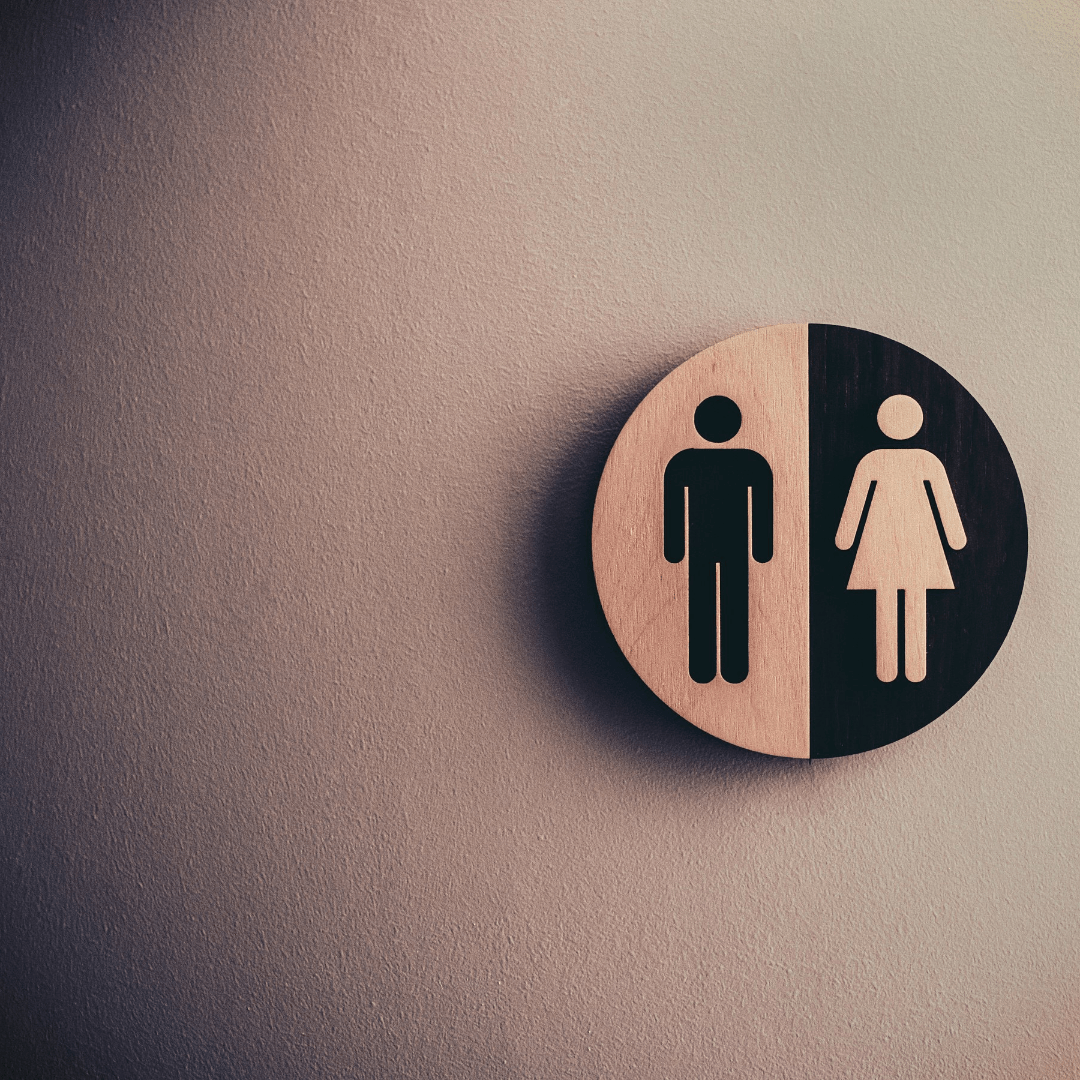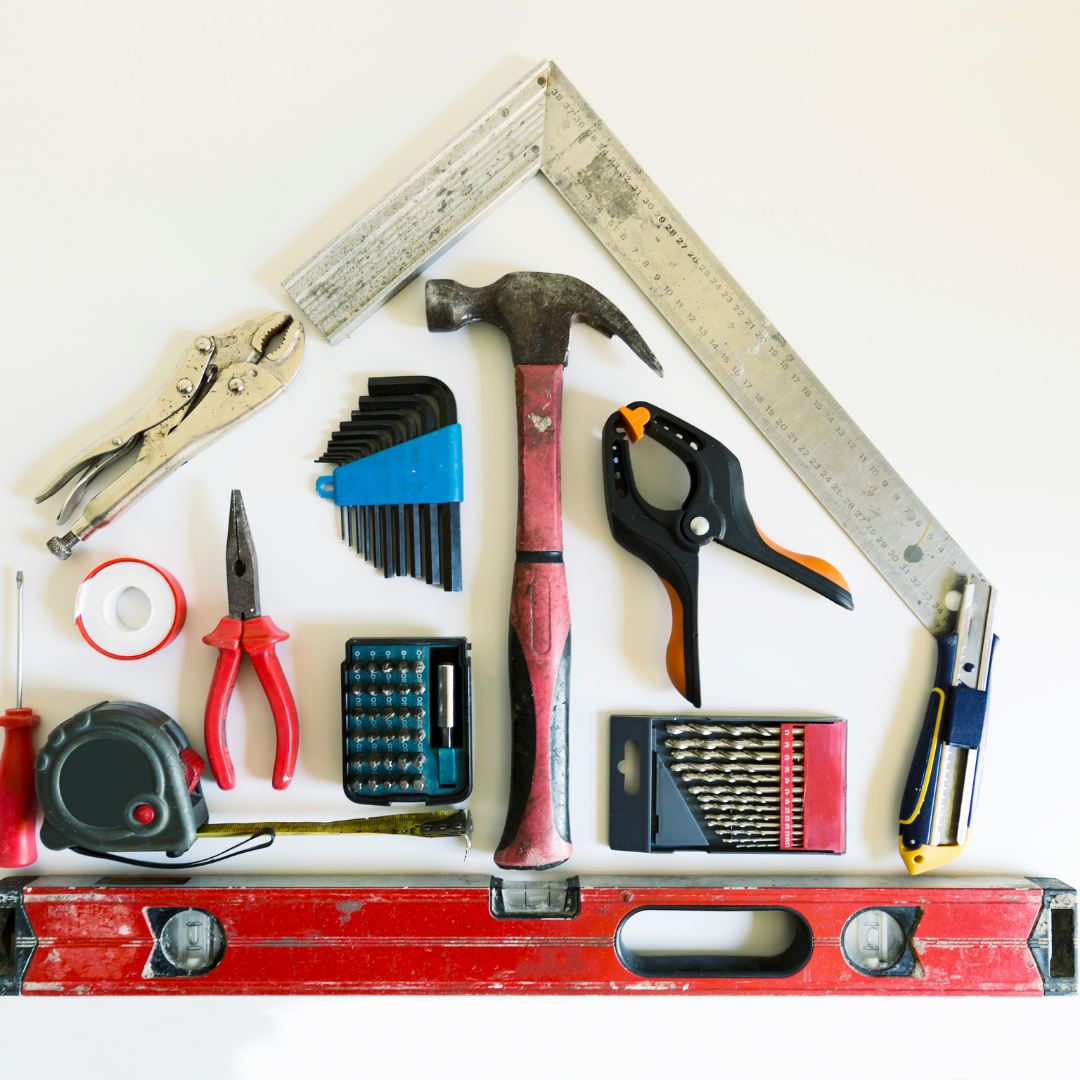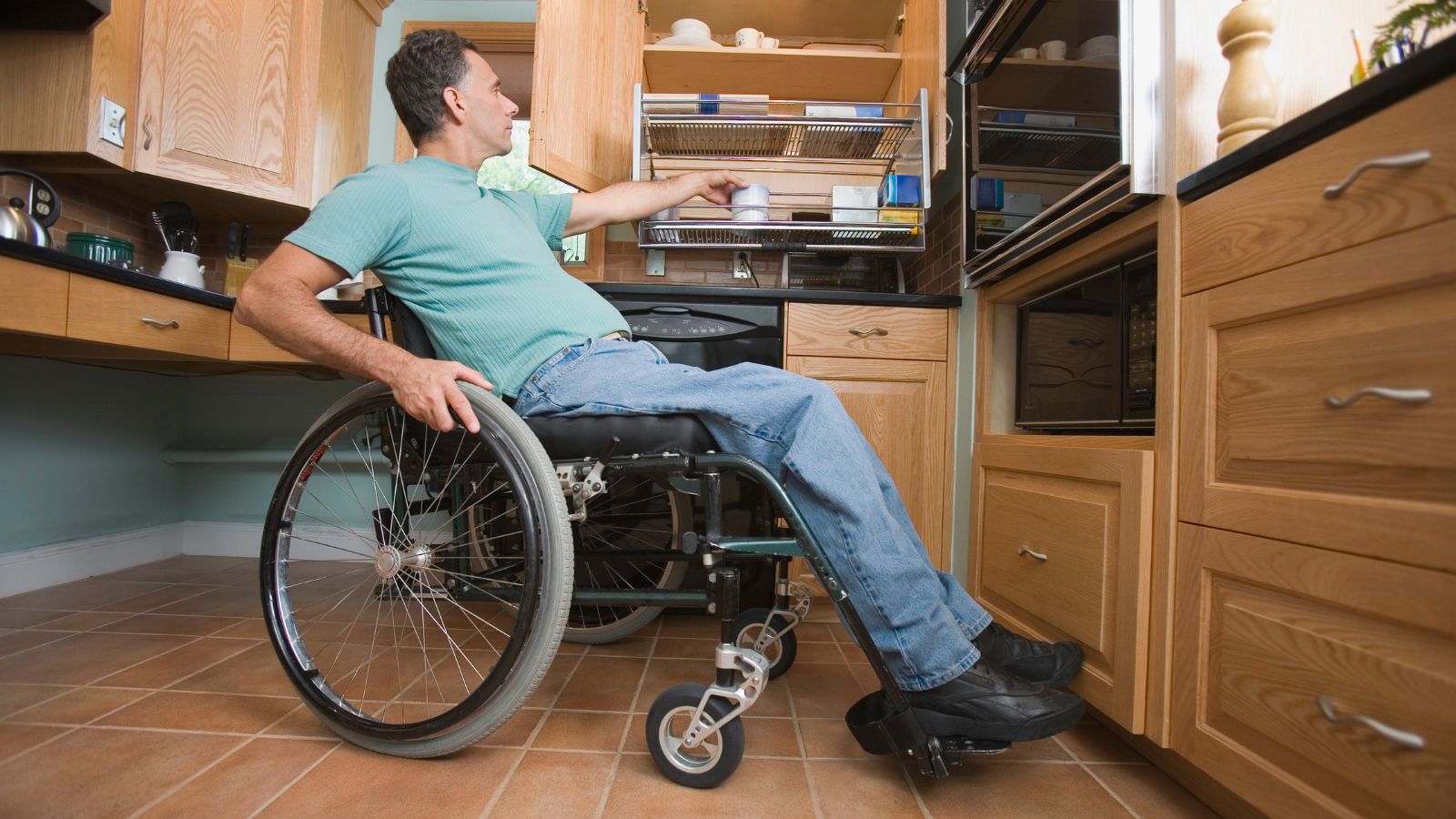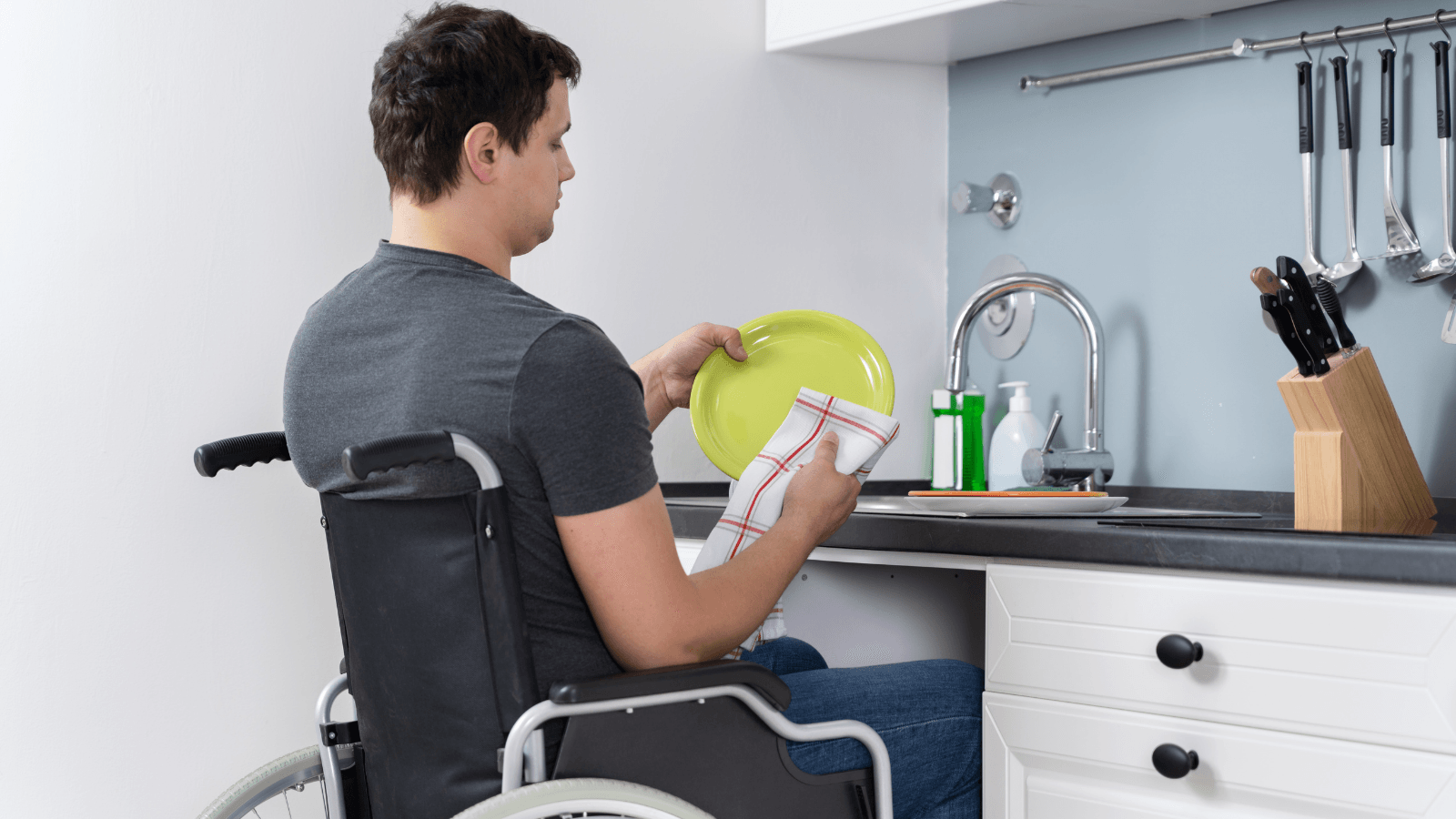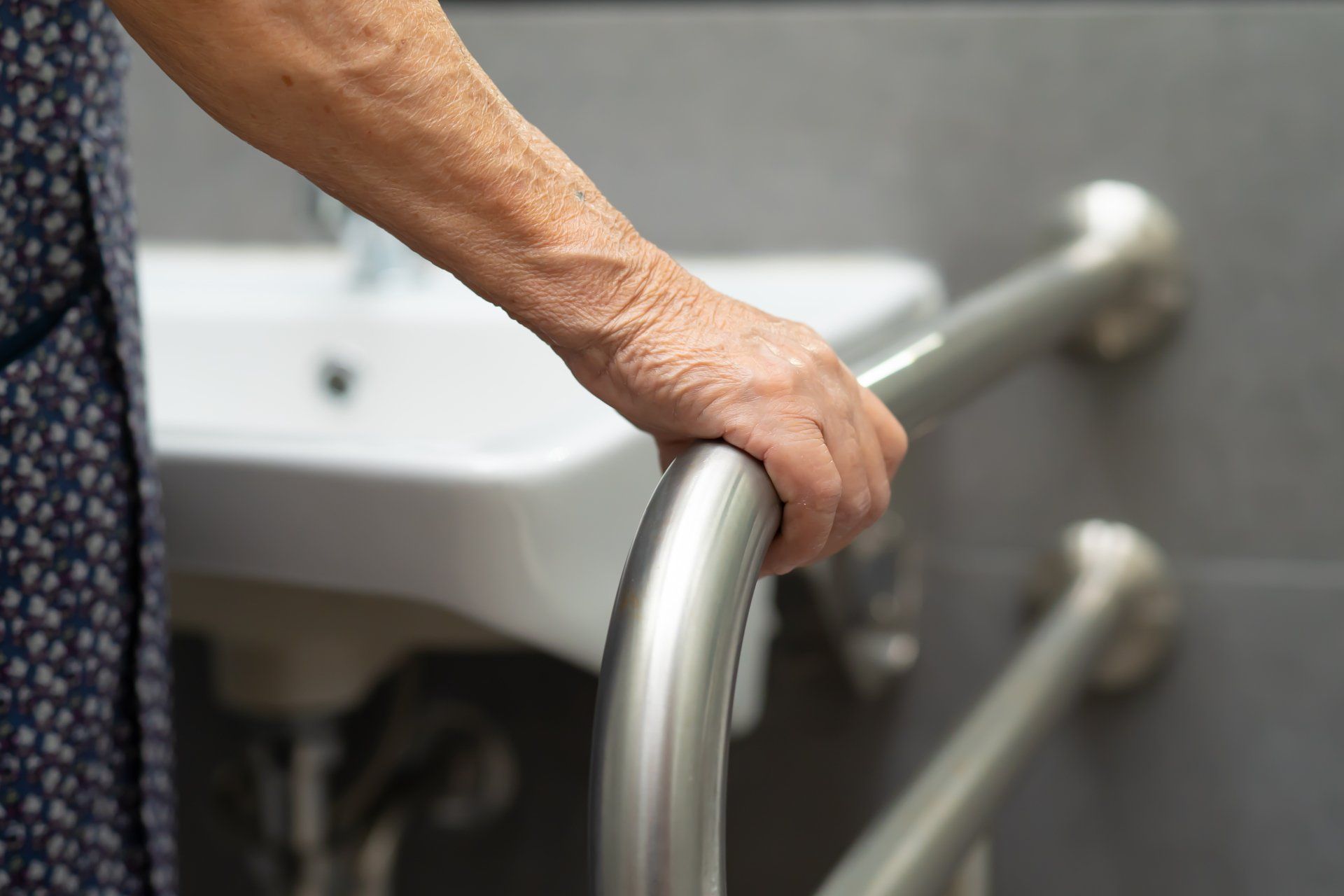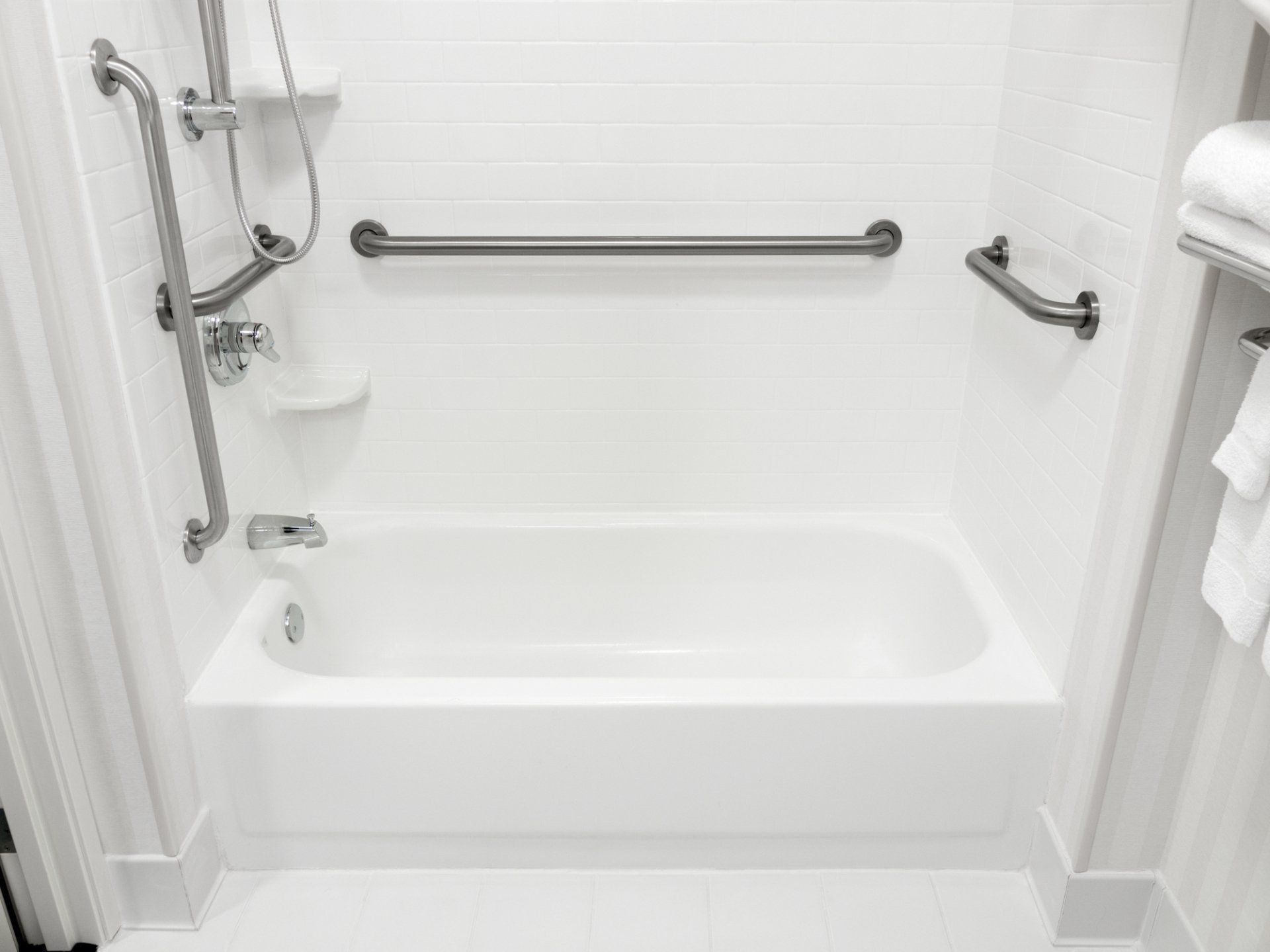What is a Roll-In Shower
A roll-in shower is also referred to as a roman or special shower and is designed for those with limited mobility. Roll-in showers are ideal for older adults, people in wheelchairs, or those with limited physical abilities.
Bathing can become difficult and in some cases dangerous for people with disabilities, so providing a safer shower option is also more comfortable for them. ADA showers that feature no curb at the entrance mean the bathroom floor is level with the shower floor and will allow for a wheelchair to roll in without obstructions. The floor in these showers is also at an incline to keep the floor as dry as possible.
Types of ADA Showers
Two different types of ADA showers fit the roll-in description. These both serve the same purpose and must meet ADA standards for features and measurements.
- The Standard Roll-In Shower
- A standard roll-in shower has three walls. Two of the walls are on the side with one long wall in the back and one long open entrance. The entrance cannot have a threshold, or if it does, it must comply with ADA standards. The shower must be at least sixty inches long and thirty inches deep. The shower stall must also have bars on the walls without seats attached to them. Outside of the shower stall, there must be enough area to make maneuvering and turning easy.
- The Alternate Roll-In Shower
- With an alternate roll-in shower, there is a short wall at the entrance with a seat behind it. To comply with ADA showers regulations there can be no barriers or only those that are ADA compliant barriers. The shower stall must be sixty inches long, and thirty-six inches deep. There should be grab bars on the back and sidewalls.
Special Features in Roll-In Showers
Roll-in showers are designed to provide safety and comfort for those who need them. To provide these benefits there are certain features installed that are not found in conventional showers. These are some of those features:
- Grab Bars
- Grab bars are installed to provide support for those with difficulty in balance. They are installed on the walls of the roll-in shower vertically, horizontally, or at an angle to help those with disabilities to pull themselves up from the bench, or to provide stability when standing or moving. The grab bars should be placed on all sides of a roll-in shower at a thirty-three to a thirty-six-inch height above the shower floor. If there is a seat or chair in the shower stall, that wall does not require a grab bar. The bars should span the length of the side and back walls, but not overlap the seating area. The bars should also be 1.25" to 1.5" in diameter to accommodate weights up to 250 lbs.
- Control Area
- With the roll-in shower, there needs to be a control area of thirty-eight to forty-eight inches outside of the stall. These can also be placed on any wall of the shower. If your shower has a seat, controls should be on the back wall and not any further apart than twenty-seven inches horizontally from the seat wall and not any further than thirty-eight to forty-eight inches from the floor.
- Shower Head
- ADA showers are not required to have a hand-held shower head, but they definitely make showering more accessible. The showerhead should be on the back wall and can be no more than twenty-seven inches from the seat so it is reachable. Typically the shower heads are height-adjustable so anyone can use them whether they are disabled or not.
- Threshold
- The threshold of the shower stall prevents water from flowing out of the stall and onto the bathroom floor. If they are installed, these thresholds cannot be more than 0.5" high with beveled edges on both sides. If the threshold is lower than 0.25" then it does not need the edges beveled.
Benefits of the Roll-In Shower
The roll-in shower provides a number of benefits. These showers are easy to use, maximize your space, provide an aesthetic appeal, and are easy to maintain. These benefits are on top of the safety and comfort features they provide to those with disabilities.
Where to Learn More About Roll-In Showers
William Falkenstein Improvements to the Home are the professionals to contact if you have questions about ADA showers or other compliant features to make your bathroom or kitchen safer and more comfortable for someone with disabilities. With over forty years of experience in the field, we are your source for quality remodeling services at prices you can afford.
